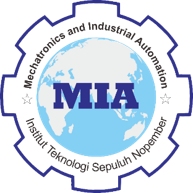Sulphate Resistance of Geopolymer Concrete Based on High Calcium Fly Ash
Abstract
Keywords
Full Text:
PDFReferences
L. Tosti, A. van Zomeren, J. R. Pels, and R. N. J. Comans, “Technical and environmental performance of lower carbon footprint cement mortars containing biomass fly ash as a secondary cementitious material,” Resour. Conserv. Recycl., vol. 134, pp. 25–33, Jul. 2018, doi: 10.1016/j.resconrec.2018.03.004.
G. Habert, “Assessing the environmental impact of conventional and ‘green’ cement production,” in Eco-efficient Construction and Building Materials, Elsevier, 2014, pp. 199–238. doi: 10.1533/9780857097729.2.199.
A. M. Rashad, “A brief on high-volume Class F fly ash as cement replacement – A guide for Civil Engineer,” Int. J. Sustain. Built Environ., vol. 4, no. 2, pp. 278–306, Dec. 2015, doi: 10.1016/j.ijsbe.2015.10.002.
T. W. Samadhi, P. P. Pratama, and N. Muan, “Development of Geopolymer Utilizing Inorganic Waste Materials,” Adv. Mater. Res., vol. 896, pp. 553–556, Feb. 2014, doi: 10.4028/www.scientific.net/AMR.896.553.
E. J. Guades, “Effect of coarse aggregate size on the compressive behaviour of geopolymer concrete,” Eur. J. Environ. Civ. Eng., vol. 23, no. 6, pp. 693–709, Jun. 2019, doi: 10.1080/19648189.2017.1304276.
S. J. Herbert, N. Sakthieswaran, and B. G. Shiny, “Review on geopolymer concerte with different additives,” Int. J. Eng. Res., vol. 1, no. 2, pp. 21–31, 2015.
J. Payá, F. Agrela, J. Rosales, M. M. Morales, and M. V. Borrachero, “Application of alkali-activated industrial waste,” in New Trends in Eco-efficient and Recycled Concrete, Elsevier, 2019, pp. 357–424. doi: 10.1016/B978-0-08-102480-5.00013-0.
P. Nuaklong, A. Wongsa, V. Sata, K. Boonserm, J. Sanjayan, and P. Chindaprasirt, “Properties of high-calcium and low-calcium fly ash combination geopolymer mortar containing recycled aggregate,” Heliyon, vol. 5, no. 9, p. e02513, Sep. 2019, doi: 10.1016/j.heliyon.2019.e02513.
B. Rangan and D. Hardjito, “Studies on fly ash-based geopolymer concrete,” Proc. 4th World …, no. November, 2005, [Online]. Available: http://www.google.com/books?hl=id&lr=&id=wIFo7L_zO8AC&oi=fnd&pg=PA133&dq=djwantoro&ots=FlZypGbTgV&sig=wTzPfRqrskTYXr8KGbO58Fgwij8
P. Topark-Ngarm, P. Chindaprasirt, and V. Sata, “Setting Time, Strength, and Bond of High-Calcium Fly Ash Geopolymer Concrete,” J. Mater. Civ. Eng., vol. 27, no. 7, Jul. 2015, doi: 10.1061/(ASCE)MT.1943-5533.0001157.
Y. Tajunnisa et al., “Performance of alkali-activated fly ash incorporated with GGBFS and micro-silica in the interfacial transition zone, microstructure, flowability, mechanical properties and drying shrinkage,” 2017, p. 020034. doi: 10.1063/1.5003517.
J. H. Potgieter, “An Overview of Cement production: How ‘green’ and sustainable is the industry?,” Environ. Manag. Sustain. Dev., vol. 1, no. 2, Aug. 2012, doi: 10.5296/emsd.v1i2.1872.
J. J. Ekaputri, C. Fujiyama, N. Chijiwa, T. D. Ho, and H. T. Nguyen, “Improving Geopolymer Characteristics with Addition of Poly-Vinyl Alcohol (PVA) Fibers,” Civ. Eng. Dimens., vol. 23, no. 1, pp. 28–34, Apr. 2021, doi: 10.9744/ced.23.1.28-34.
Y. Tajunnisa, “EFFECT OF GGBFS AND MICRO-SILICA ON MECHANICAL PROPERTIES, SHRINKAGE AND MICROSTRUCTURE OF ALKALI-ACTIVATED FLY ASH MORTAR,” Int. J. GEOMATE, vol. 13, no. 39, Nov. 2017, doi: 10.21660/2017.39.11341.
Y. Tajunnisa, “A STUDY ON FACTORS AFFECTING GEOPOLYMERIZATION OF LOW CALCIUM FLY ASH,” Int. J. GEOMATE, Aug. 2017, doi: 10.21660/2017.36.84153.
SNI 03-2834-2000, “SNI 03-2834-2000: Tata cara pembuatan rencana campuran beton normal,” Sni 03-2834-2000, pp. 1–34, 2000.
Astm, “Standard Specification for Coal Fly Ash and Raw or Calcined Natural Pozzolan for Use,” Annu. B. ASTM Stand., no. C, pp. 3–6, 2010.
N. Ahmad Husin, “PERFORMANCE OF HIGH CALCIUM FLY ASH BASED GEOPOLYMER CONCRETE IN CHLORIDE ENVIRONMENT,” Int. J. GEOMATE, vol. 19, no. 74, pp. 107–113, Oct. 2020, doi: 10.21660/2020.74.56966a.
Y. Tajunnisa, “CHARACTERIZATION ALKALI-ACTIVATED MORTAR MADE FROM FLY ASH AND SANDBLASTING,” Int. J. GEOMATE, vol. 17, no. 60, Aug. 2019, doi: 10.21660/2019.60.24636.
E. Susanti, H. Istiono, I. Komara, D. Pertiwi, Y. Septiarsilia, and F. K. Syahputra, “Effect of fly ash to water-cement ratio on the characterization of the concrete strength,” IOP Conf. Ser. Mater. Sci. Eng., vol. 1010, no. 1, p. 012035, Jan. 2021, doi: 10.1088/1757-899X/1010/1/012035.
I. K. A. Tambusay, W. Sutrisno, P. Suprobo, D. Iranata, “The Investigation study of improving Durability Performance of Marine Infrastructure by using the Engineered Cementitious Composite,” 14th Int. Student Conf. Adv. Sci. Technol., pp. 8–12, Dec. 2019, doi: 10.4324/9780367853815-2.
ASTM, “C 143/C 143M – 03 Standard Test Method for Slump of Hydraulic-Cement Concrete,” Annu. B. ASTM Stand., pp. 1–4, 2003.
ASTM, “ASTM C 39/C 39M – 01. Standard Test Method for Compressive Strength of Cylindrical Concrete Specimens,” pp. 3–9, 2014, doi: 10.1520/C0039.
ASTM, “C267 - 20: Standard Test Methods for Chemical Resistance of Mortars, Grouts, and Monolithic Surfacings and Polymer Concretes,” ASTM Int., vol. 01, no. Reapproved 2012, pp. 1–4, 2013, doi: 10.1520/C0267-01R12.2.
S. D. Partha, N. Pradip, and K. S. Prabir, “Sulphate resistance of slag blended fly ash based geopolymer concrete,” in Concrete 2013: Proceedings of the 26th Biennial National Conference of the Concrete Institute of Australia, 2013, no. October. doi: 10.4028/www.scientific.net/AMR.651.168.
DOI: http://dx.doi.org/10.12962%2Fj23378557.v9i1.a16235
Refbacks
- There are currently no refbacks.
This work is licensed under a Creative Commons Attribution 4.0 International License. IPTEK The Journal of Engineering published by Pusat Publikasi Ilmiah, Institut Teknologi Sepuluh Nopember.
Please contact us for order or further information at: email: iptek.joe[at]gmail.com Fax/Telp: 031 5992945. Editorial Office Address: Pusat Riset Building 6th floor, ITS Campus, Sukolilo, Surabaya 60111, Indonesia.








